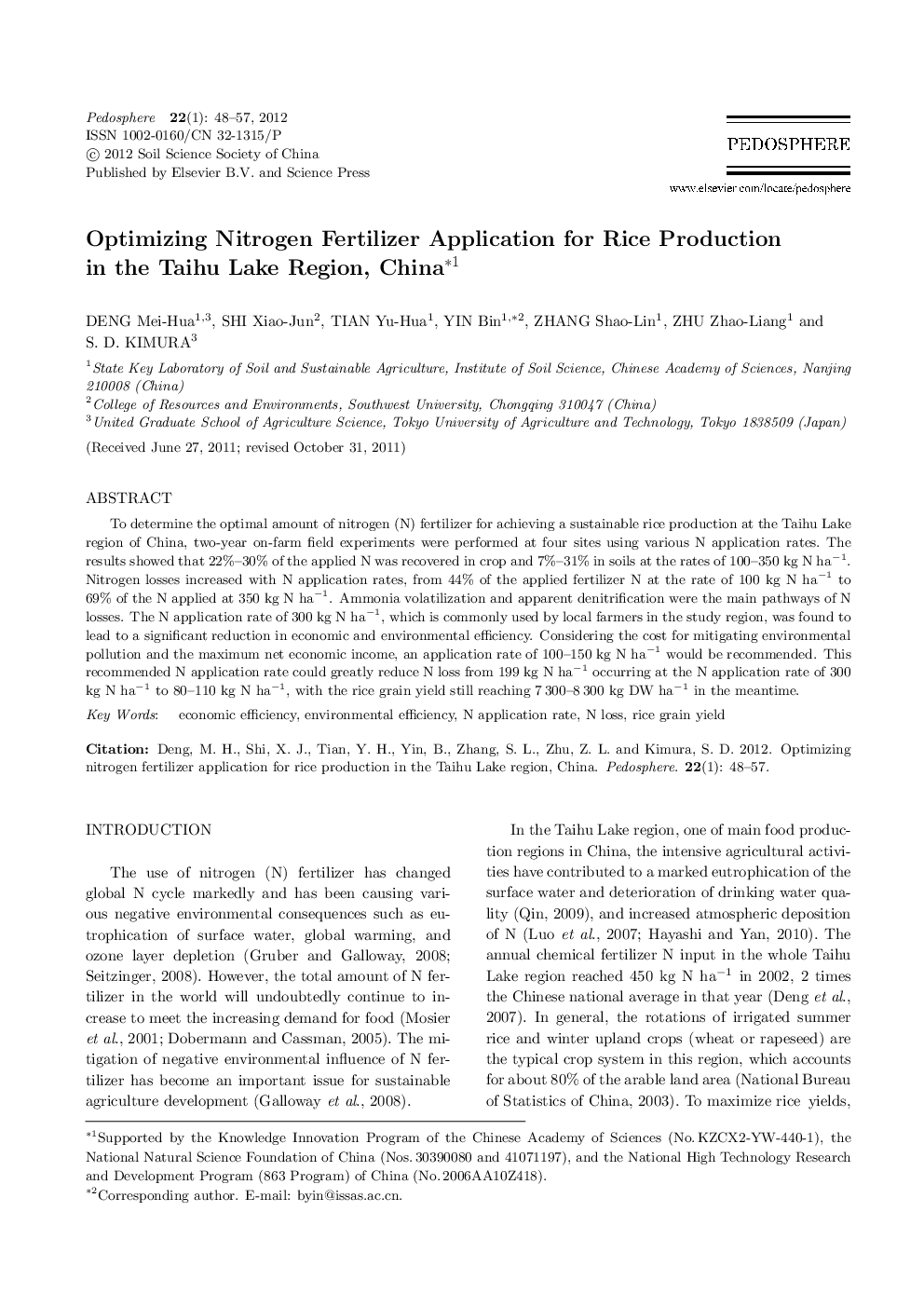| Article ID | Journal | Published Year | Pages | File Type |
|---|---|---|---|---|
| 4581748 | Pedosphere | 2012 | 10 Pages |
To determine the optimal amount of nitrogen (N) fertilizer for achieving a sustainable rice production at the Taihu Lake region of China, two-year on-farm field experiments were performed at four sites using various N application rates. The results showed that 22%–30% of the applied N was recovered in crop and 7%–31% in soils at the rates of 100–350 kg N ha−1. Nitrogen losses increased with N application rates, from 44% of the applied fertilizer N at the rate of 100 kg N ha−1 to 69% of the N applied at 350 kg N ha−1. Ammonia volatilization and apparent denitrification were the main pathways of N losses. The N application rate of 300 kg N ha−1, which is commonly used by local farmers in the study region, was found to lead to a significant reduction in economic and environmental efficiency. Considering the cost for mitigating environmental pollution and the maximum net economic income, an application rate of 100–150 kg N ha−1 would be recommended. This recommended N application rate could greatly reduce N loss from 199 kg N ha−1 occurring at the N application rate of 300 kg N ha−1 to 80–110 kg N ha−1, with the rice grain yield still reaching 7 300–8 300 kg DW ha−1 in the meantime.
